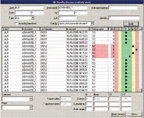| Siemens Healthcare Diagnostics recently launched Version 12 of the ADVIA CentraLink Networking Solution provides a consolidated environment for the management of information, laboratory results, and workflow – both for automated and non-automated customers. It facilitates communication between the laboratory information system (LIS), automation systems, connected instruments, and multiple clients in the central laboratory or decentralized locations. At the same time, Version 12 of the ADVIA CentraLink Networking Solution expands system capacity to allow the handling of up to 40 million active patient results with greater database responsiveness – which is of particular interest for large volume laboratories. In addition, increased system capacity permits the seamless integration of up to 32 different instruments |  |
Eric Olson, Vice President, Informatics & eBusiness, Siemens Healthcare Diagnostics, The ADVIA CentraLink 12 Networking Solution is an important step in advancing labs' ability to automate the processes that cost the most time and money. The ADVIA CentraLink Networking Solution provides seamless IT integration for Siemens lab solutions, and this version takes its productivity and capacity to the highest levels yet.
Enhanced flexibility and quality control
 |
Version 12 of the ADVIA CentraLink Networking Solution offers new instrument interfaces, error logging, sample management improvements, expanded delta checking functions, enhanced review and edit capabilities, with new rules capabilities, as well as enhanced QC features. Operators are able to review and edit results from multiple instruments, implement laboratory auto-verification rules, and manage quality control from a single location consistently. The end result is improved operational efficiency and patient care and decreased staff effort. |

















